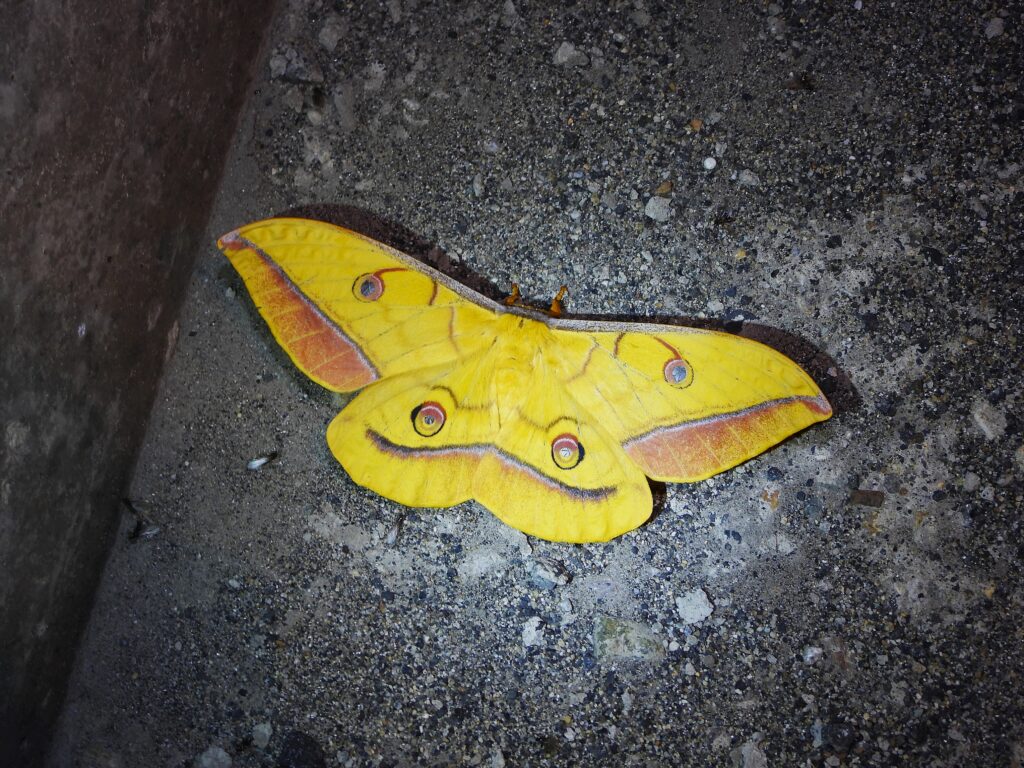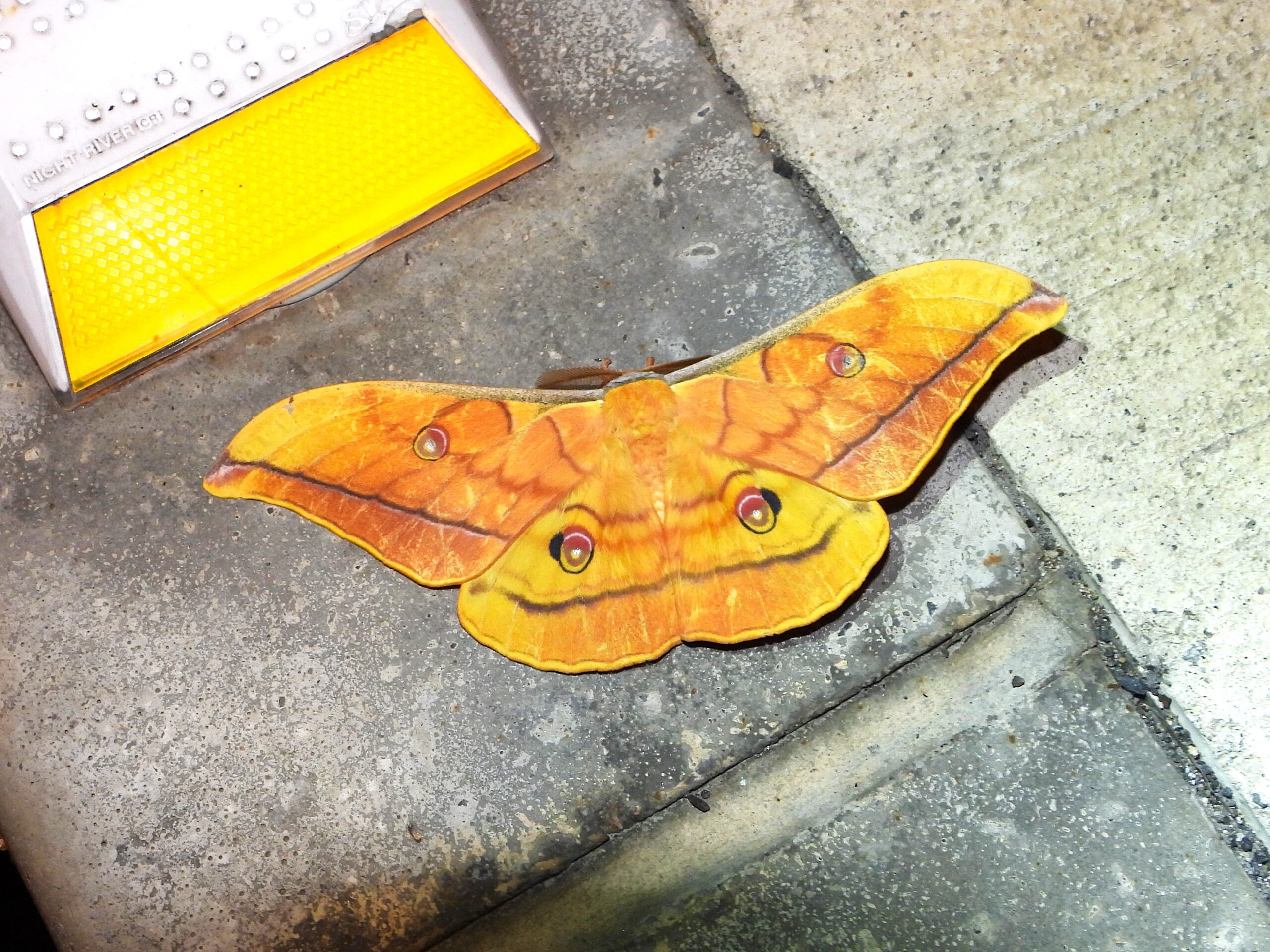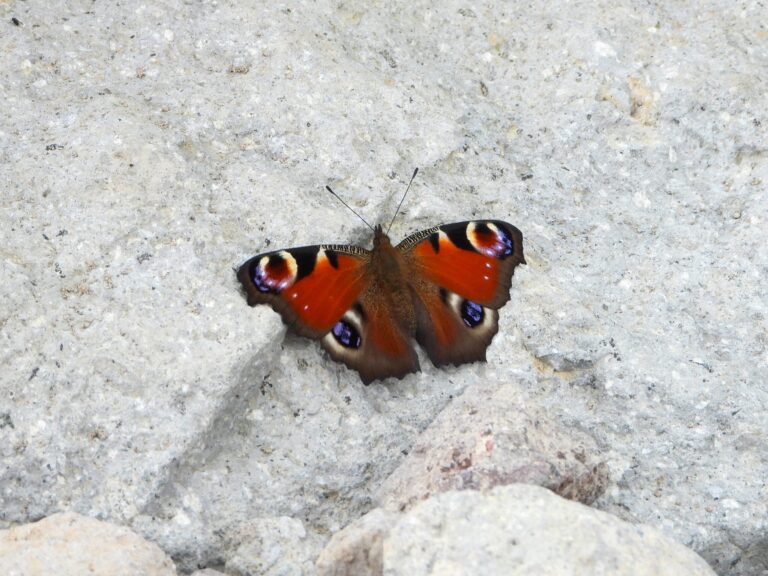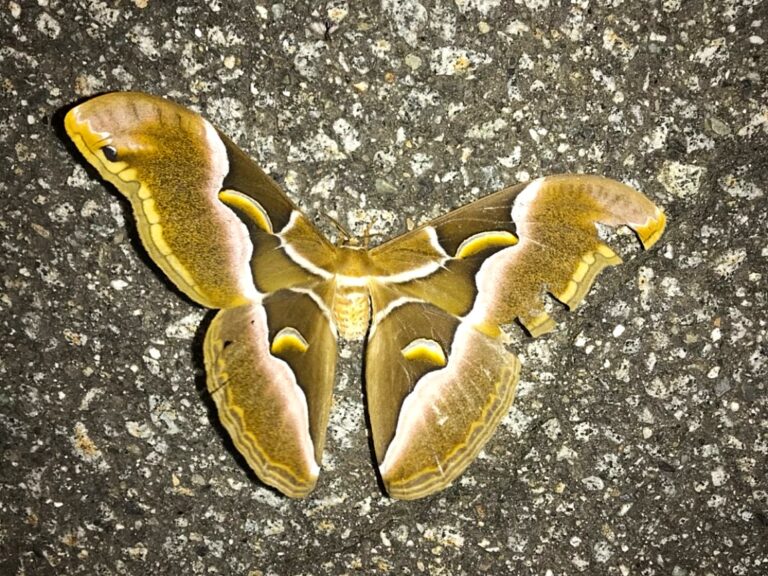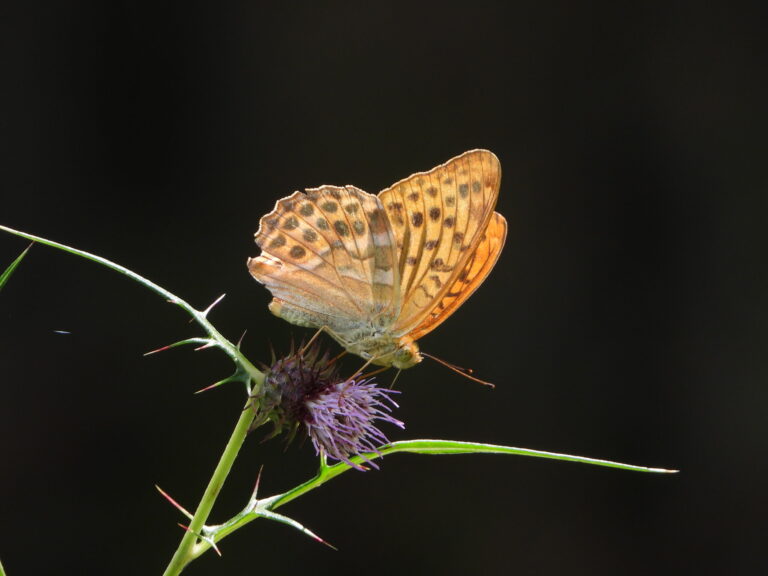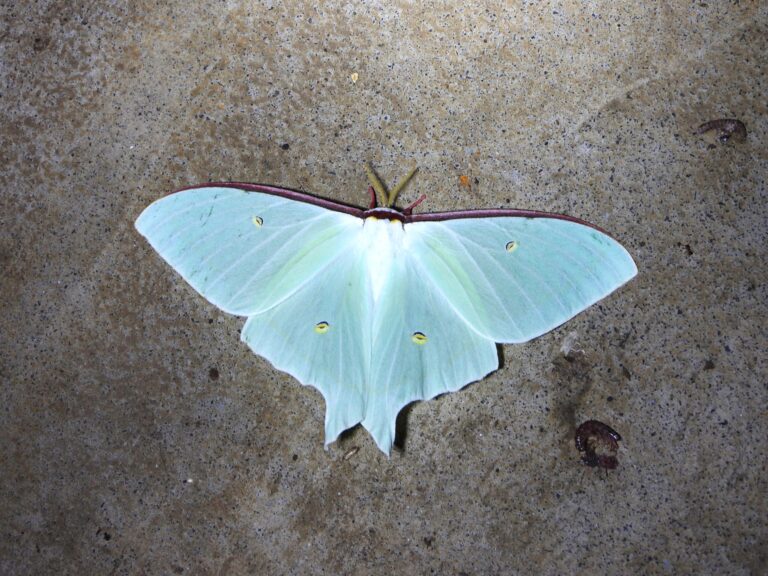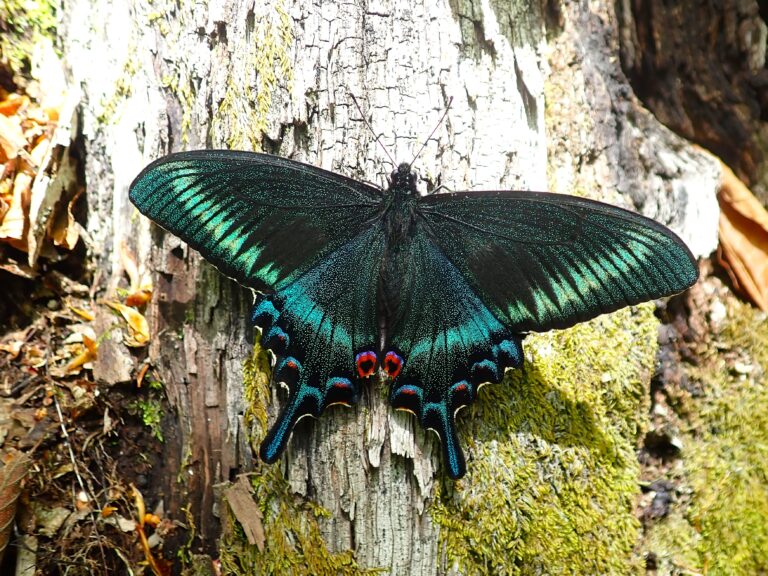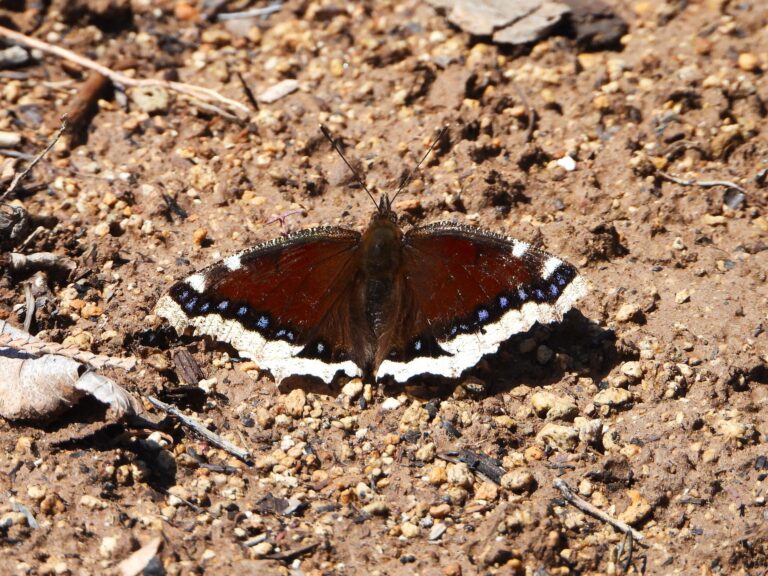Japanese Oak Silk Moth (Antheraea yamamai) – Wildlife of Japan
Introduction
The Japanese Oak Silk Moth (Antheraea yamamai), called Yamamayu-ga in Japanese, is one of Japan’s largest moths and a striking member of the Saturniidae family. Beyond its impressive presence, it is historically valued for producing a rare wild silk known as “Yamamayu silk.” Unlike the domesticated silkworm, this species still lives in natural woodlands and remains a symbol of Japan’s satoyama landscapes.
Appearance
Adults are among the largest moths in Japan, with a wingspan often reaching 10–12 cm. The wings are yellow-brown to olive with prominent translucent eye spots (ocelli) on both forewings and hindwings. The body is thick and finely hairy.
Caterpillars are pale bluish-green with rows of yellow to orange tubercles; they rest and feed on oak leaves where their coloration provides camouflage. Males have broad, feathery antennae, while females are larger-bodied and less mobile.
Habitat
This moth inhabits deciduous broadleaf forests where oaks are abundant, especially in Honshu, Shikoku, and Kyushu. Typical host trees include Konara oak (Quercus serrata), Kunugi oak (Q. acutissima), and Mizunara oak (Q. mongolica var. crispula). It occurs from lowland satoyama to montane forests, and even forest-edge parks.
Behavior
Adults are nocturnal and readily attracted to lights in late summer and autumn. Males fly actively, guided by female pheromones, while females remain closer to host trees. Since adults have reduced mouthparts, they do not feed, and their short lifespan is devoted entirely to reproduction.
Diet
The larvae feed primarily on the leaves of Fagaceae trees, especially oaks (Quercus spp.) and occasionally chestnut (Castanea). Adults do not feed at all.
Reproduction
This species is univoltine, producing one generation per year. Depending on the region, adults may appear as early as July, but they are most abundant from August to September, and in cooler or mountainous areas they can still be seen into October. After mating, females lay eggs on oak branches. The eggs overwinter and hatch the following spring. After several larval stages, caterpillars spin a tough, greenish-brown cocoon attached to branches or foliage. This silk, called Yamamayu silk, has been traditionally harvested in Japan.
Conservation
The species is not globally endangered, but local declines occur due to loss of oak woodlands, pesticide use, and light pollution. Conservation measures include maintaining native oak stands, reducing broad-spectrum pesticide use, and minimizing unnecessary artificial lighting during the moth’s flight season.
Author’s Impression
In the countryside, I often come across Yamamayu moths resting near the lights of small convenience stores in autumn. What fascinates me most is the variation in their wing color: some appear more yellowish, others more olive, and some even grayish. Observing these subtle differences between individuals makes watching this species especially enjoyable.
Video
